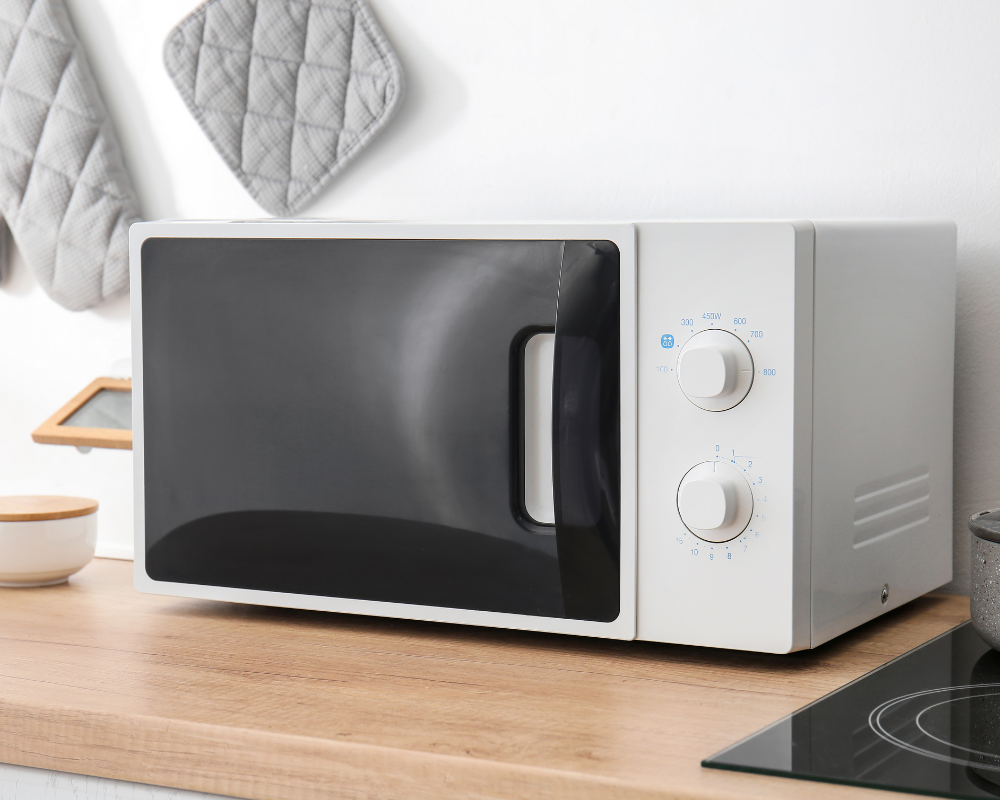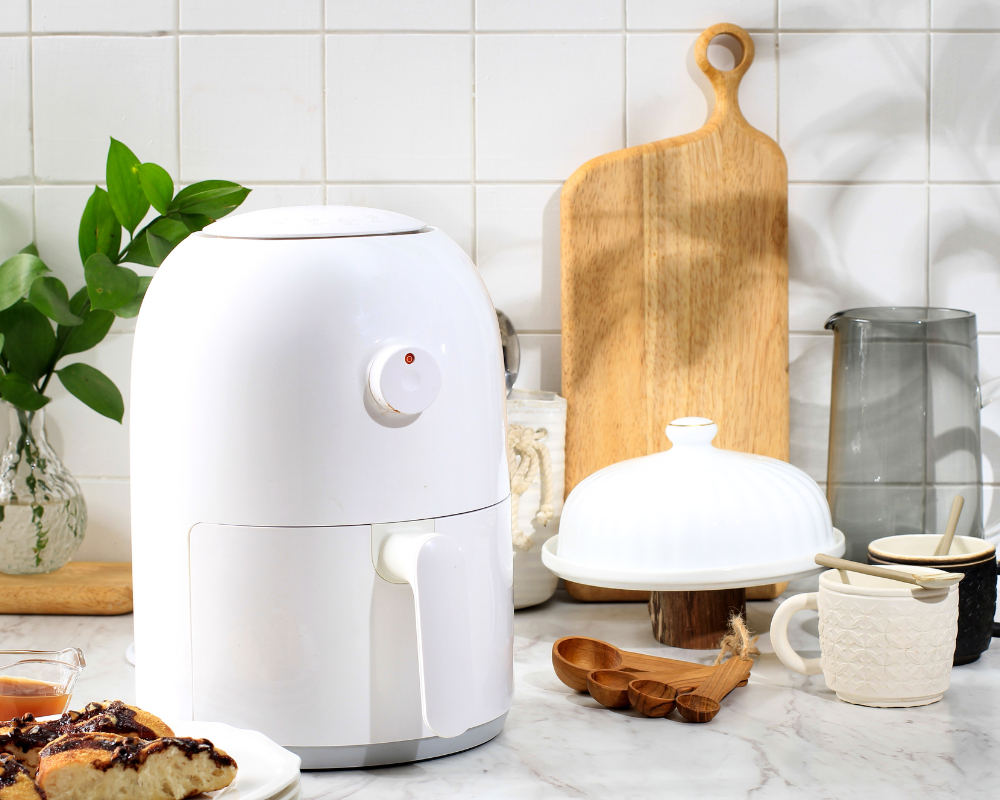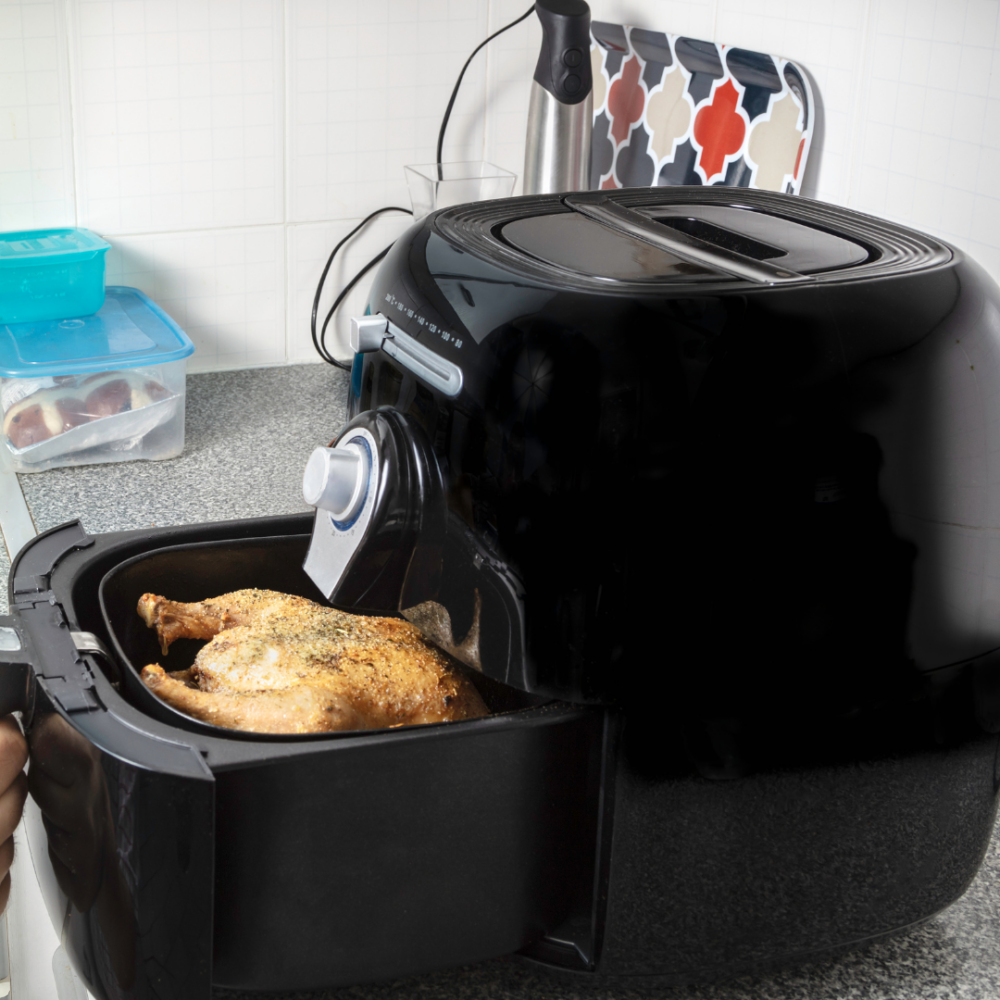Table of Contents
Two contenders have emerged as titans in the realm of kitchen appliances – the Air Fryer vs Microwave In the ever-changing pace of modern kitchens, efficiency, and convenience. Both claim to revolutionize the way we cook, but they have distinct functions and features. Below we will delve into the Air Fryer vs. Microwave debate, exploring their strengths, weaknesses, and how they can co-exist in the culinary landscape.
Air Fryer: The Crispy Revolution



The Air Fryer burst onto the scene, promising guilt-free indulgence by using hot air circulation to cook food with a fraction of the oil traditionally required. It’s a game-changer and a great choice for those craving the crunch of fried delights without the excess fat however slightly longer cooking times than the microwave. The Air Fryer’s convection mechanism circulates hot air around the food, creating a crispy exterior while maintaining a moist interior. From fries to chicken wings, the Air Fryer has become synonymous with healthier alternatives to deep-frying.
Advantages of the Air Fryer

Air fryers have revolutionized the way we cook, with their rapid cooking times and easy clean-up, they are perfect for busy individuals or families who want to enjoy home-cooked meals without spending hours in the kitchen. Additionally, air fryers are versatile and can be used to cook a wide range of dishes including everything from appetizers to main courses and even desserts. Their ability to evenly cook food at high temperatures gives them an edge over conventional ovens, resulting in faster, more consistent cooking results.
Healthier Cooking
Enjoy your favorite fried foods with significantly less oil, reducing calorie intake and promoting a healthier lifestyle.
Versatility
Beyond frying, Air Fryers can roast, bake, and even grill – an instant pot, making them a versatile addition to any kitchen.
Speed
Air Fryers cook food faster than traditional ovens, making them ideal for busy individuals seeking quick and efficient meal preparation plus lower energy prices.
Disadvantage of the Air Fryer
One notable disadvantage of using an air fryer is its limited capacity. Unlike a traditional deep fryer that can handle larger batches of food at once, the smaller basket size of most smaller air fryers means that cooking for a large family or a gathering can become time-consuming and inconvenient however the larger appliance has dual drawers so more than adequate to cook for a family.
Another drawback to consider is the potential lack of versatility with an air fryer. While it excels in producing crunchy versions of traditionally fried foods like chicken wings and fries, its functionality may be more limited when it comes to other types of dishes. This could potentially lead to an over-reliance on the air fryer for specific recipes and neglecting other cooking methods that could yield tastier or more varied results.
Microwave: The Time-Saver

The Microwave, a stalwart in kitchens for decades, has long been associated with speed and convenience. Using electromagnetic radiation, microwaves quickly heat and cook food, making it a go-to appliance for reheating leftovers and preparing quick snacks. While not known for creating crispy textures like the Air Fryer, the Microwave excels in its own right.
Advantages of the Microwave Oven

The microwave oven is a time-saver, allowing busy individuals to quickly and conveniently cook or reheat meals. Its efficiency in defrosting and heating food without compromising taste or texture makes it a valuable tool in the kitchen. Furthermore, the microwave oven is energy efficient, requiring less power than traditional ovens or stovetops for many cooking tasks. This not only reduces energy costs but also contributes to environmental sustainability.
Also, its versatility extends beyond just cooking as it can effectively sterilize kitchen sponges and disinfect certain items using steam generated within the appliance. With these practical advantages coupled with modern technological advancements that improve safety and user-friendliness, the microwave oven continues to solidify its place as an indispensable kitchen appliance.
Speedy Cooking
The Microwave reigns supreme when it comes to speed, with the ability to heat or cook food in a fraction of the time compared to conventional methods.
Versatility
In addition to reheating, Microwaves can steam vegetables similar to the old pressure cookers, cook rice, and even bake certain dishes, showcasing their versatility.
Preservation of Nutrients
Microwaving food often retains more nutrients compared to other cooking methods, as the shorter cooking times help minimize nutrient loss.
Disadvantage of the Microwave
Microwaves have revolutionized the way we prepare food, offering speed and convenience that align perfectly with our fast-paced modern lives. However, this technological marvel comes with its own set of disadvantages that often go overlooked.
The uneven heating properties of microwaves can result in hot spots within the food, creating a risk of burns or undercooked areas. This issue not only affects the quality of the meal but also poses safety concerns for those consuming it. Additionally, there are concerns about potential health risks associated with prolonged exposure to microwave radiation during operation. While modern microwaves are designed with safety features to minimize radiation leakage, some studies suggest that even low levels of exposure could have long-term health implications. These factors raise important questions about the true cost of convenience when using microwave ovens in our daily lives.
Finding Harmony in the Kitchen
While the Air Fryer and Microwave have distinct roles, they can complement each other in a well-equipped kitchen. Imagine a scenario where you use the Microwave to quickly thaw frozen ingredients or cook a side dish while relying on the Air Fryer to add the finishing touch of crispiness to your main course.
Conclusion
In the Air Fryer vs. Microwave showdown, there is no clear winner – it ultimately depends on your culinary needs, cooking style and preferences. Whether you prioritize healthier cooking with a crispy texture finish or require a time-saving ally for quick meals, both appliances have a place in today’s kitchens. As technology continues to advance, we may witness the emergence of hybrid appliances that seamlessly integrate the best of both worlds, providing even more options for the discerning home cook.



